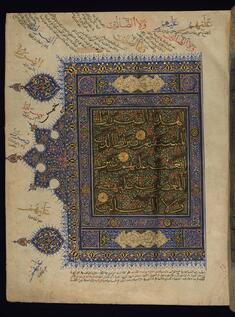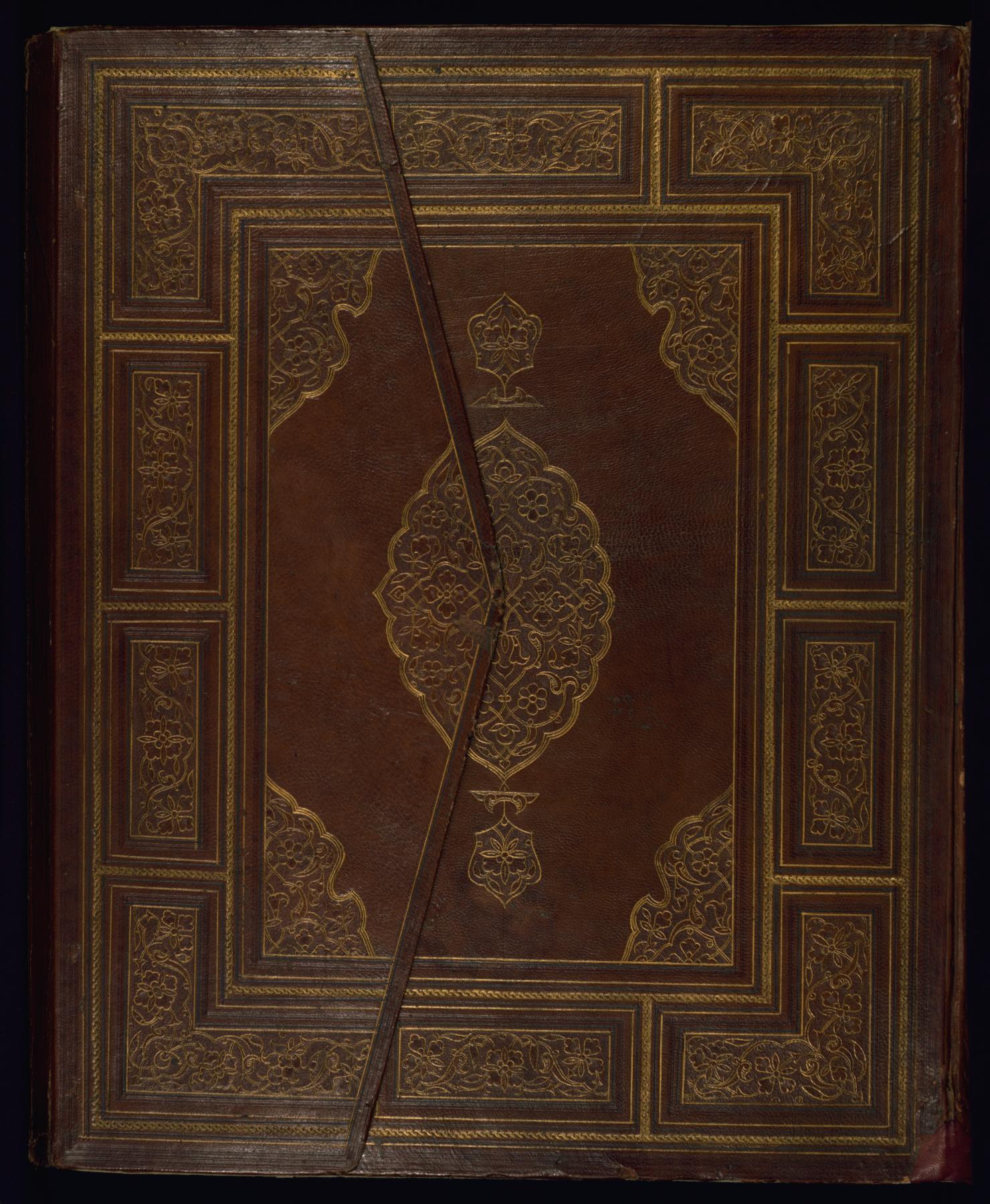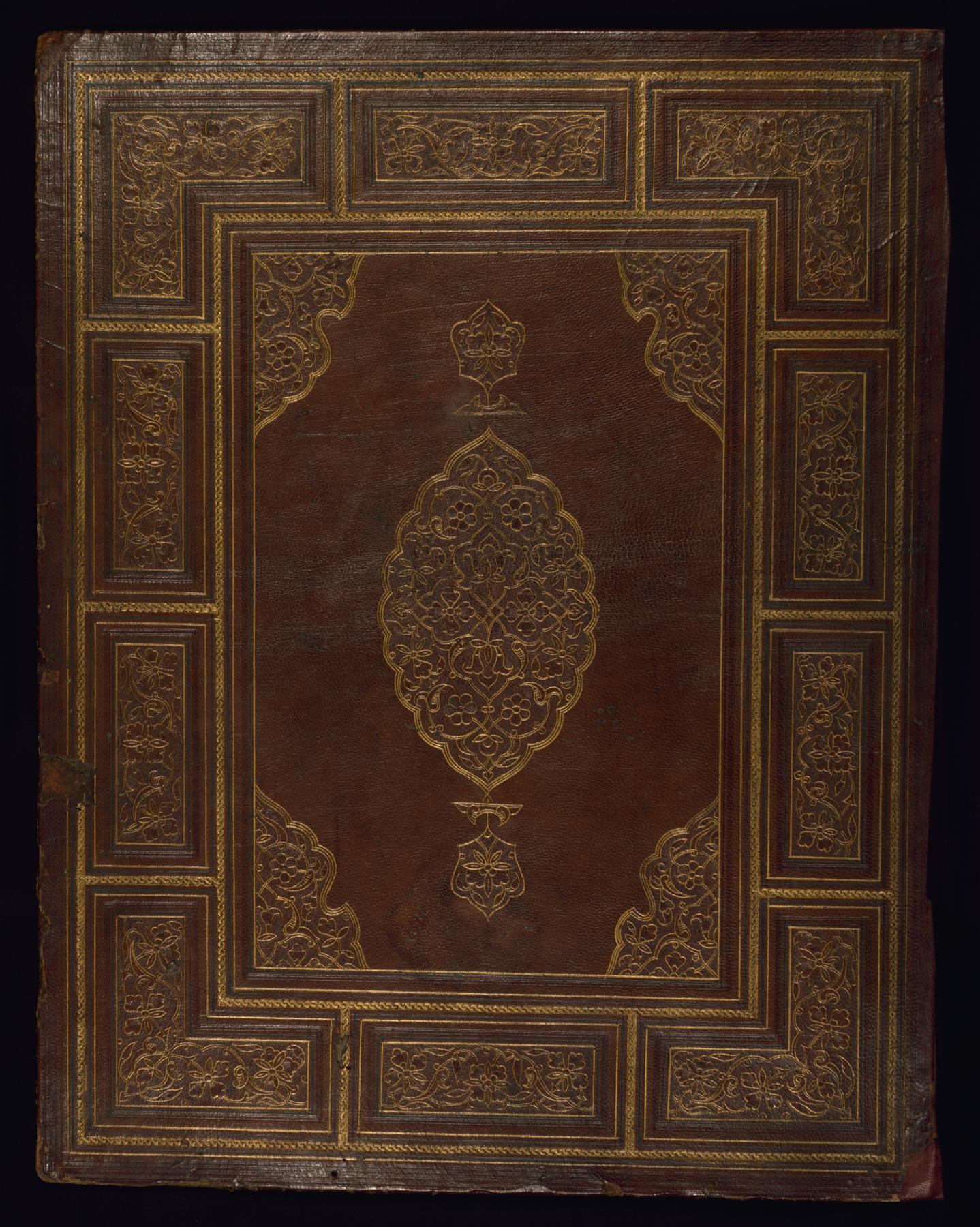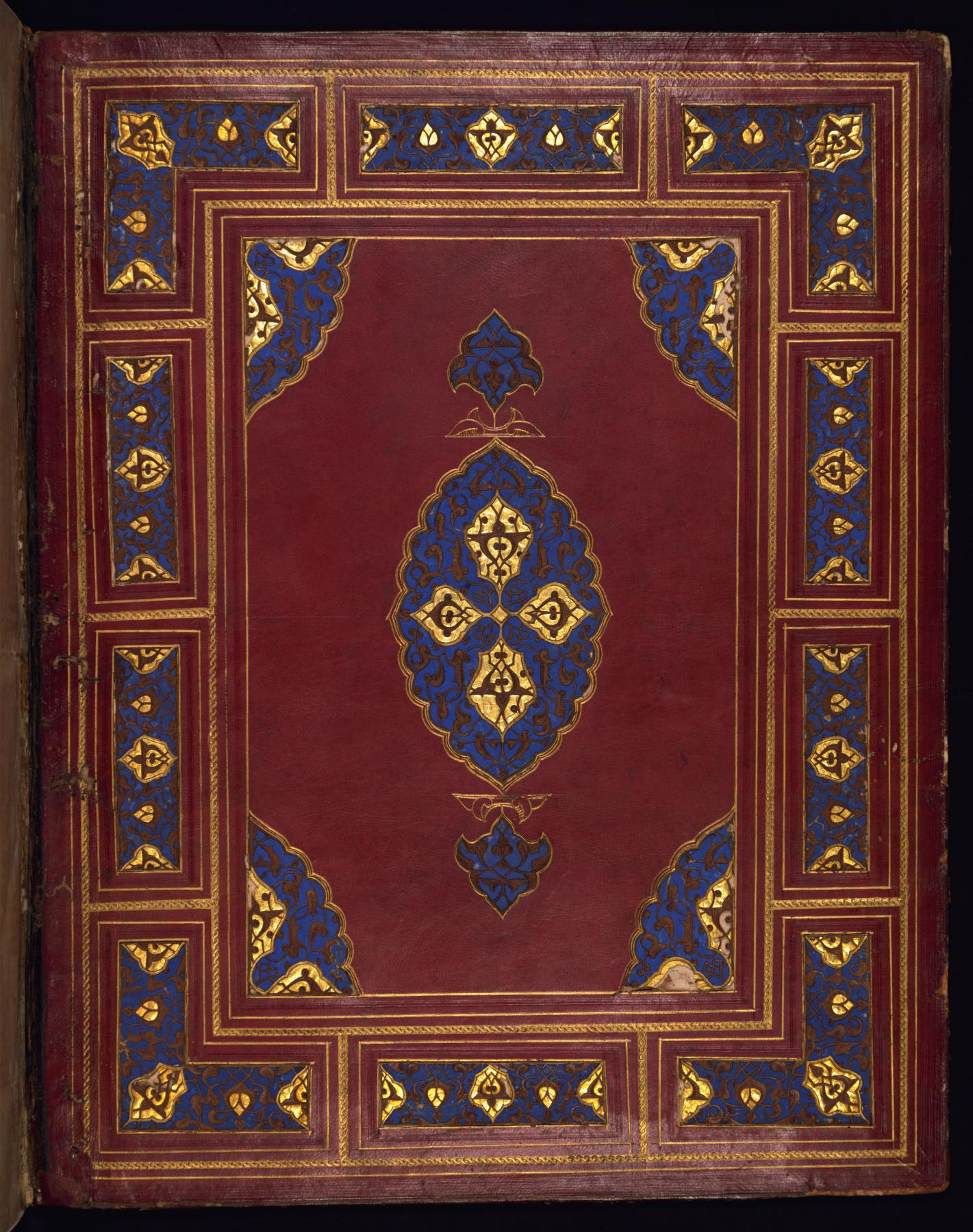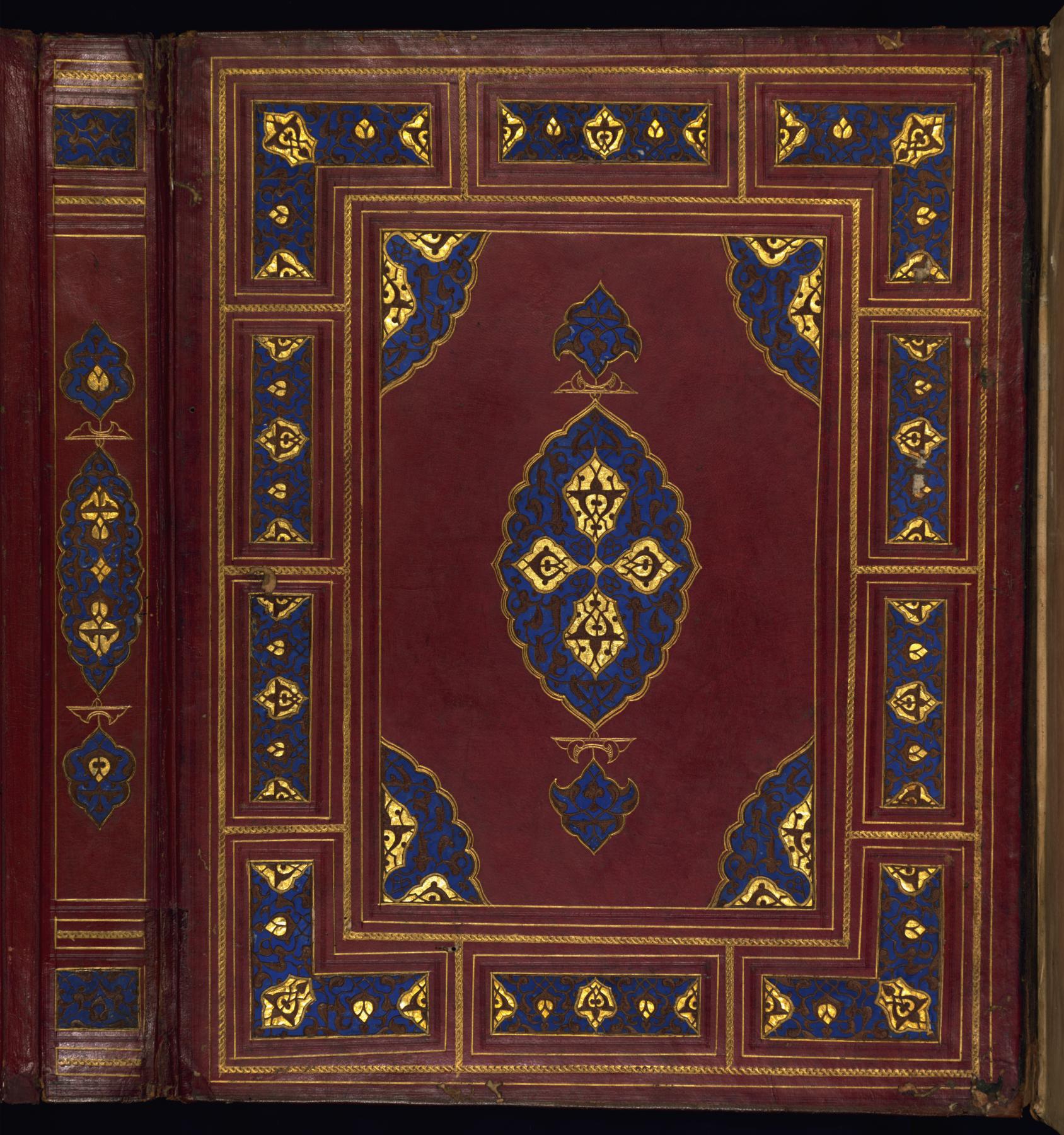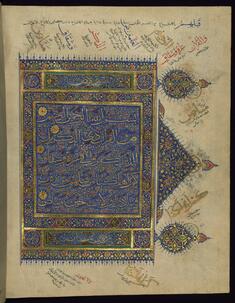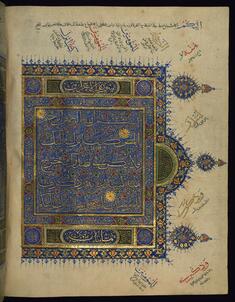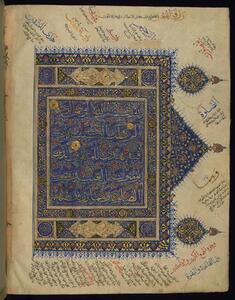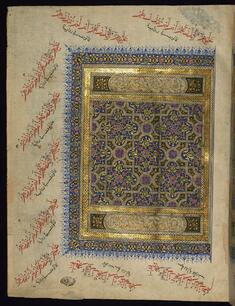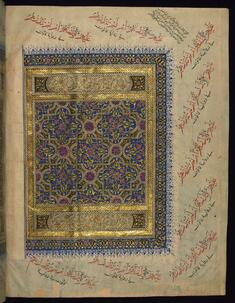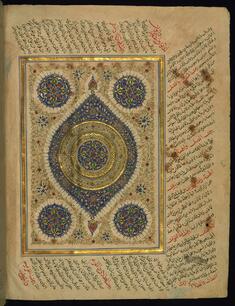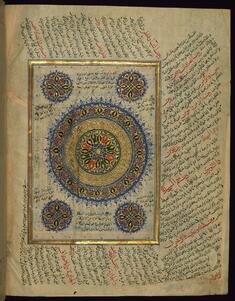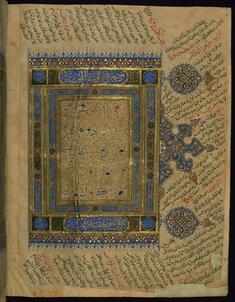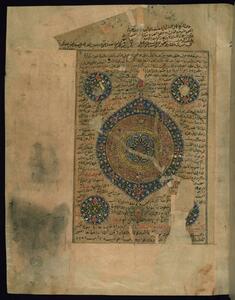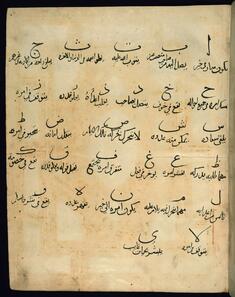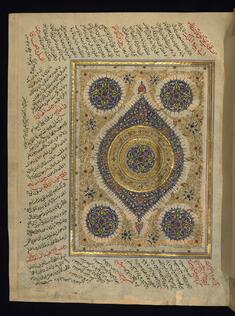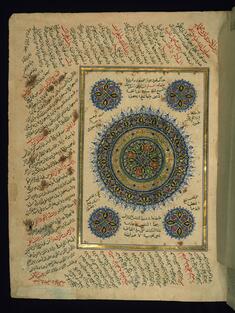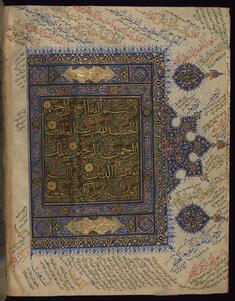Qur'an
(Manuscripts and Rare Books, Islamic World , Islamic Manuscripts)
Fluid letters undulate across the page punctuated by illuminated medallions. They focus the reader’s eyes on the sacred words in this elaborately decorated copy of the Qur’an—the Muslim sacred text communicated by God (Allah) and dictated by the angel Gabriel to the prophet Muhammad. Inscriptions in the margins document readers’ interpretations of the text.
The presence of the seal of the Ottoman sultan Bāyezīd II (r. 1481–1512) on various pages indicates that this lavish copy of the Qur’an was sent from India to Istanbul, sometime between the late 15th and early 16th century, perhaps as a diplomatic gift. At the time, Indian Muslims participated in a network of commercial, diplomatic, and artistic exchanges that extended throughout Asia Europe, and Africa.
This large-format, illuminated Timurid copy of the Qur'an is believed to have been produced in northern India in the 9th century AH/15th century CE. The manuscript opens with a series of illuminated frontispieces. The main text is written in a large, vocalized polychrome mu'aqqaq script. Marginal explanations of the readings of particular words and phrases are in thuluth and naskhi scripts, and there is interlinear Persian translation in red naskhi script. The fore-edge flap of the gold-tooled, brown leather binding is inscribed with verses 77 through 80 from Chapter 56 (Surat al-waqi'ah). The seal of Sultan Bayezid II (AH 886-917 AH/1481-1512 CE) appears on fol. 8a. There is an erased bequest (waqf) statement and stamp of Sultan 'Uthman Khan (AH 432-6/1027-31 CE) on fol. 3a.
Provenance
Provenance (from the French provenir, 'to come from/forth') is the chronology of the ownership, custody, or location of a historical object. Learn more about provenance at the Walters.
Sultan 'Uthman Khan [1]; Sultan Bayezid II [2]; Dikran Kelekian, New York and Paris; purchased by Henry Walters, Baltimore; by bequest to Walters Art Museum, 1931.
[1] Erased bequest (waqf) statement and stamp on fol. 3a
[2] Seal on fol. 8a
Exhibitions
| 2009 | The Saint John's Bible: A Modern Vision through Medieval Methods. The Walters Art Museum, Baltimore. |
| 2007 | Speaking the Word of God: Illuminated Korans from the Walters Art Museum. The Walters Art Museum, Baltimore. |
| 1997 | The Divine Word and Sacred Sites of Islam. The Walters Art Gallery, Baltimore. |
| 1988 | Masterpieces of Ornament. The Walters Art Gallery, Baltimore. |
| 1988 | Bindings from the Islamic World. The Walters Art Gallery, Baltimore. |
| 1984-1985 | Illuminated Manuscripts: Masterpieces in Miniature. The Walters Art Gallery, Baltimore. |
| 1984 | The Taste of Maryland: Art Collecting in Maryland 1800-1934. The Walters Art Gallery, Baltimore. |
| 1981-1982 | Symbols of Faith. National Geographic Society, Washington. |
| 1977-1978 | Splendor in Books. Grolier Club, New York; The Walters Art Gallery, Baltimore. |
Conservation
| Date | Description | Narrative |
|---|---|---|
| 9/15/1981 | Examination | examined for condition |
Geographies
India (Place of Origin)
Measurements
Folio H: 15 3/4 x W: 12 3/16 in. (40 x 31 cm)
Credit Line
Acquired by Henry Walters
Location in Museum
Not on view
Accession Number
In libraries, galleries, museums, and archives, an accession number is a unique identifier assigned to each object in the collection.
In libraries, galleries, museums, and archives, an accession number is a unique identifier assigned to each object in the collection.
W.563
Do you have additional information?
Related Objects
